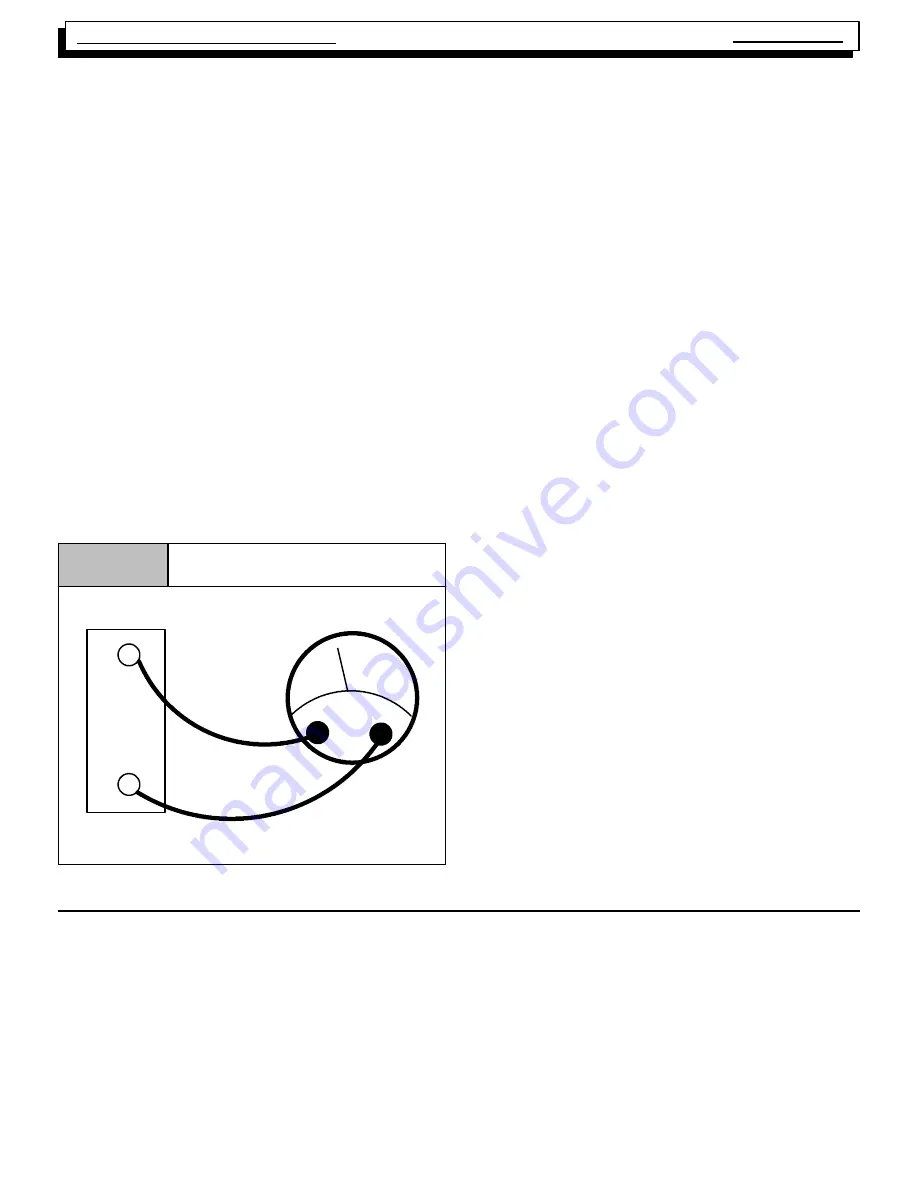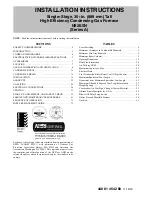
Single Stage Multi Position Furnace
Service Manual
9
440 08 2001 02
LOCATION
The thermostat should not be mounted where it may be af-
fected by drafts, discharge air from registers (hot or cold), or
heat radiated from the sun of appliances. Never install in al-
coves, bathrooms or bedrooms.
The thermostat should be located about 5 ft. above the floor
in an area of average temperature, with good air circulation.
Normally, an area in close proximity to the return air grille is
the best choice.
Mercury bulb type thermostats
MUST
be level to control tem-
perature accurately to the desired set--point. Electronic digi-
tal type thermostats SHOULD be level for aesthetics.
HEAT ANTICIPATORS
Heat anticipators are small resistance heaters built into most
electric--mechanical thermostats. Their purpose is to pre-
vent wide swings in room temperature during furnace opera-
tion.
In order to accomplish this, the heat output from the anticipa-
tor must be the same regardless of the current flowing
through it. Consequently, most thermostats have an adjust-
ment to compensate for varying current draw in the thermo-
stat circuit.
The proper setting of heat anticipators then is important to
insure proper temperature control and customer satisfac-
tion.
Measuring Current Draw
Figure 10
Ammeter
W
R
Subbase
Amps
The best method to obtain the required setting for the heat
anticipator, is to measure the actual current draw in the con-
trol circuit (“W”) using a low range (0--2.0 Amps) Ammeter.
(See
Figure 10
) After measuring the current draw, simply
set the heat anticipator to match that value.
If a low range ammeter is not available, a “Clamp--on” type
meter may be used as follows:
1. Wrap EXACTLY ten (10) turns of wire around the jaws
of a clamp--on type ammeter.
2. Connect one end of the wire to the “W” terminal of the
thermostat sub--base, and the other to the “R” termi-
nal.
3. Turn power on, and wait approximately 1 minute, then
read meter.
4. Divide meter reading by 10 to obtain correct anticipator
setting.
If an ammeter is not available, a setting of 0.30 amps may
be used for models equipped with the HONEYWELL
SV9541M Gas Valve/Ignition Control. They should, howev-
er, provide satisfactory operation in most cases.
Electronic thermostats do not use a resistance type anticipa-
tor. These thermostats use a microprocessor (computer)
that determines a cycle rate based on a program loaded into
it at the factory.
These cycle rates are normally field adjustable for different
types to equipment. The method of adjustment, however,
varies from one thermostat manufacturer to another. Check
with the thermostat manufacturer to find out the proper way
of adjusting the cycle rate.
12. CONTROL WIRING
Control wiring is an important part of the total equipment
installation, since it provides the vital communications link
between the thermostat, and the equipment malfunctions.
Control wiring that is either too long, undersized, or improp-
erly connected (be it simply loose, or on the wrong terminal)
can in fact be the source of many equipment problems.
ALWAYS check to make sure that the control wiring is con-
nected to the proper terminal(s) of the equipment and ther-
mostat you are using. Remember, also, that the thermostat
terminals are not always identified alike by different thermo-
stat manufacturers. Connections MUST be clean and tight
to insure trouble--free operation.
For years, installers have run a wire from the “Y” terminal of
the room thermostat and connected it directly to the contact
on coil of a condensing unit. (not making any connection to
the furnace with this wiring. Then, run the low voltage “Com-
mon” wire from the condensing unit back to the “C” terminal
of the furnace.
With the HONEYWELL ST9160B electronic Fan Timer/Fur-
nace Control, the “Y” terminal of the furnace does in fact
serve a particular purpose. Failure to connect it will result in
certain improper operation as follows:












































